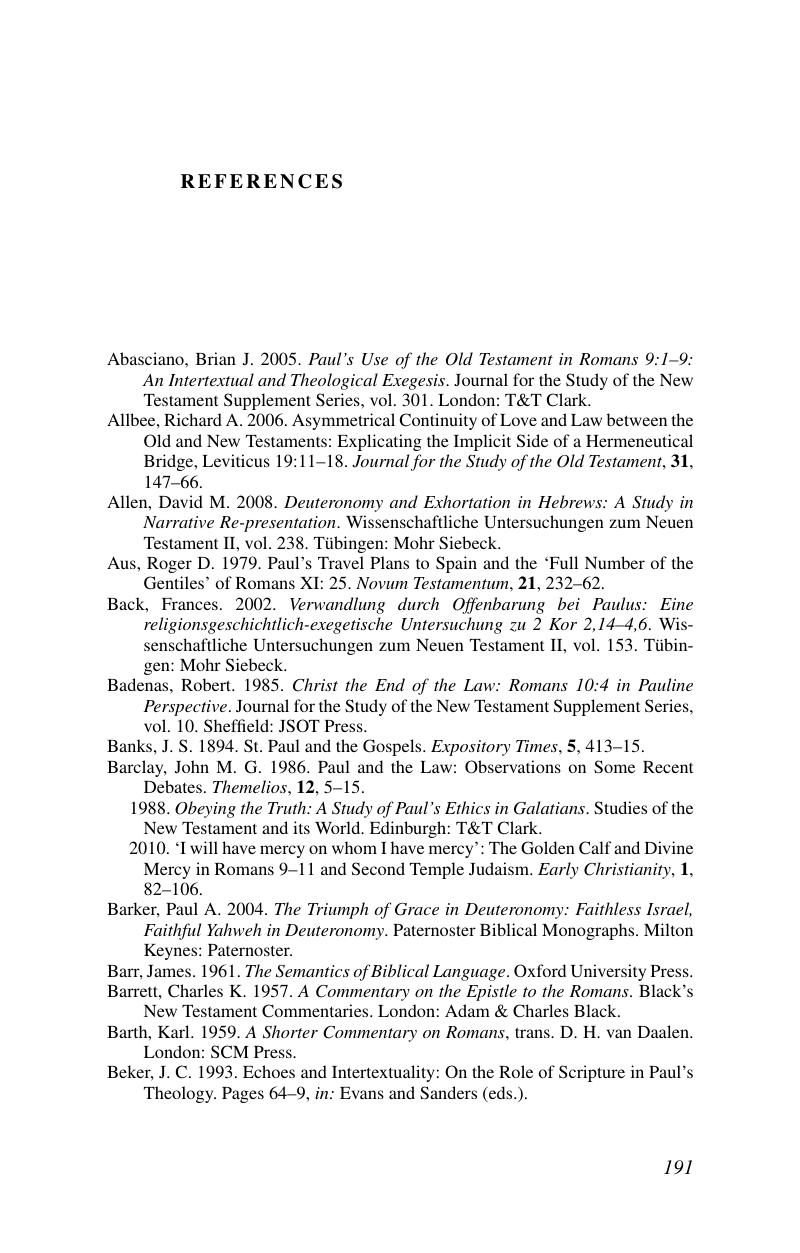Book contents
- Covenant Renewal and the Consecration of the Gentiles in RomansVolume 161
- Society for New Testament Studies
- Series page
- Covenant Renewal and the Consecration of the Gentiles in Romans
- Copyright page
- Contents
- Preface
- 1 Introduction
- Part I Romans 9–11: Paul’s covenant-renewal hermeneutics
- Part II Romans 12–15: covenant renewal and consecration
- References
- Index of Scripture References
- Index of Names
- Index of Subjects
- References
References
Published online by Cambridge University Press: 18 December 2014
- Covenant Renewal and the Consecration of the Gentiles in RomansVolume 161
- Society for New Testament Studies
- Series page
- Covenant Renewal and the Consecration of the Gentiles in Romans
- Copyright page
- Contents
- Preface
- 1 Introduction
- Part I Romans 9–11: Paul’s covenant-renewal hermeneutics
- Part II Romans 12–15: covenant renewal and consecration
- References
- Index of Scripture References
- Index of Names
- Index of Subjects
- References
Summary

- Type
- Chapter
- Information
- Covenant Renewal and the Consecration of the Gentiles in Romans , pp. 191 - 204Publisher: Cambridge University PressPrint publication year: 2014

